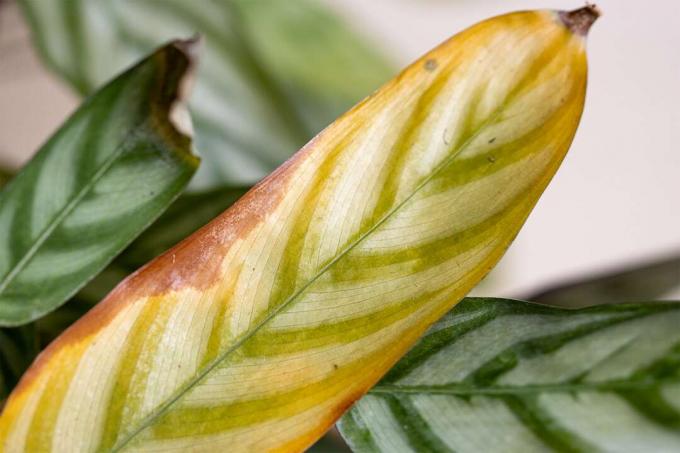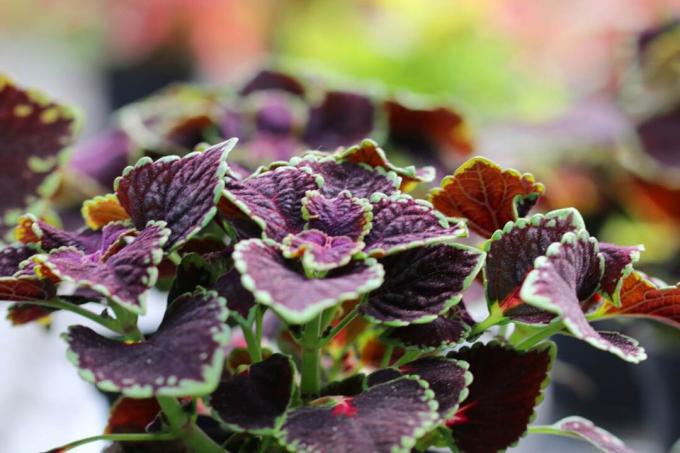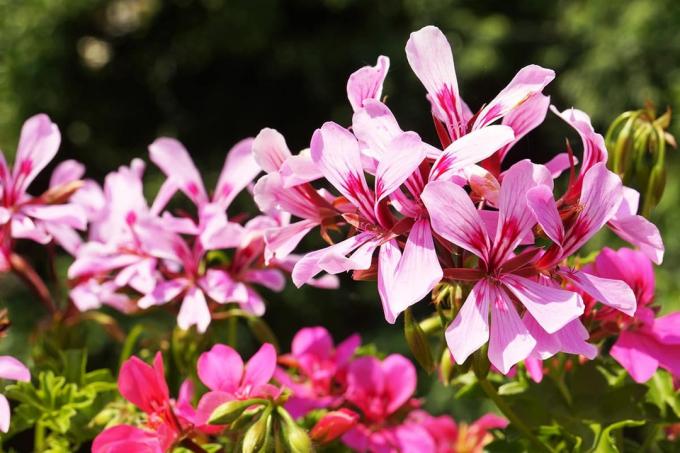
Table of contents
- forms of irrigation
- Required tool
- First procedure
- materials
- First steps
- completion
- Second procedure
- materials
- First steps
- completion
- Other alternatives
- Tropf-Blumat plant waterer for pots and boxes
- Ground spike for watering ball
- Plant waterer to hang on the pot
- Conclusion
Plants and colorful flowers in tubs or boxes on the terrace or balcony are always nice to look at. But plants cultivated in pots in particular need more irrigation water than those planted outdoors. In order not to have to water constantly, and not only in the hot summer, the tubs and balcony boxes can be used with one be provided with a self-made irrigation system, which also includes a holiday for the terrace and balcony owners can help. With the right tips, any hobby gardener can easily build one themselves.
forms of irrigation
Plant watering for balconies and potted plants always makes sense if the homeowners travel frequently or the balcony is on a south-facing side. Such an irrigation system can also be easily built by yourself. However, some materials are required for this, which can be obtained beforehand in the garden trade or hardware store. The tools for construction can be found in almost every well-equipped household. There are two sensible methods for long-term plant watering for balconies and potted plants. The first method is particularly suitable for the elongated window boxes. This requires two boxes that are placed inside each other. The second method should be used for large tubs, which usually only contain one plant. Because only one bucket is required here. However, both methods are equally easy to build yourself:
Required tool
In order to be able to make the watering boxes for the balcony yourself, you also need one or the other tool, which should actually be found in every household:
- Scissors
- Hammer and thick nail
- alternatively small drill
First procedure
materials
- a large box or tub with no bottom drainage holes
- a smaller box or bucket that fits snugly in the big one and doesn't hit the floor
- the small balcony box needs drainage holes
- if necessary, two or three bricks on which the small box can rest
- Alternatively, plastic cups, such as old yoghurt cups, can also be used
- wide fabric bands, for example made of cotton
- Water level meter from hydroponics
- wire
Tip:
Ideally, only plastic boxes are used, because holes for the drain have to be drilled all around the outer box. If clay pots are used here, it can happen that they tear when drilling and can no longer be used.
First steps
Once all the required materials have been obtained from a retailer, you can get started. First the outer box is prepared. To do this, small drainage holes are knocked in all around with a hammer and nail, if you have a drill available you can use it. Two small holes are made a little higher, here the wire for attaching the water level indicator will later be pulled through. It continues as follows:
- Place 2-3 bricks on the bottom, depending on the size of the bucket or box
- alternatively distribute the plastic cups upside down on the floor
- Attach the water level indicator to the inside wall so that it protrudes far enough out of the box to be easy to read
- later it must also be able to reach down into the storage water
- drilling or punching holes in the bottom of the smaller box that is used
- make sure that holes are required for water drainage
- on the other hand, holes are required for the cotton strips
- Cut enough long and wide strips of fabric
- these can be obtained from an old cotton cloth
- Pull cotton threads through the bottom holes
- allow enough play up and down
- the upper part must later disappear into the ground, the lower part must be able to hang in the water
completion

Once these preparations are complete, the irrigation system can be completed. For this purpose, the inner balcony box or bucket is planted as always. Ideally, drainage is also laid on the floor here so that no waterlogging can occur here either. Care must be taken to ensure that the cotton strips are pulled up to the ground and can thus reach the roots. Potsherds or gravel are suitable as drainage. Plant fleece is placed over this so that no soil blocks the holes. The cotton threads are pulled through small holes in this fleece. Then plant as usual:
- Fill in soil appropriate to the plants
- Leave cotton strips in the ground
- Insert plants onto the ends of the cotton strips so that the roots are in contact
- place the inner bucket on the bricks of the outer bucket
- Fill in water at the bottom between the boxes
- water new plants from above
Tip:
The water level gauge can now be used to see how much water is still in the lower tank. Before a longer absence, this should be filled well, excess water can escape from the side holes.
Second procedure
materials
- a box or tub without drainage holes
- ideally use plastic ones
- Clay stones for hydroponics
- Water level meter from hydroponics
- plant fleece
- a piece of hose
First steps
Only one planter is required for the second irrigation system. This is better suited for larger tubs, for example, but balcony boxes can also be laid out in this way. First, drain holes are drilled all around the sides or punched in with a nail and hammer. When it comes to the height, you should make sure that the holes are where the earth will later be. There must be no drainage holes in the ground, otherwise the stored water that is needed for irrigation will leak out here. The hydroponic beads are now placed on the ground up to an appropriate height, depending on how much water is to be stored. At the same time, the water level meter is plugged in at a corner. In another corner, a previously cut, sufficiently long piece of tubing is inserted. This is used later to fill the water reservoir. Permeable plant fleece is placed over this first level. This prevents soil from getting between the clay balls.
Tip:
The plant fleece not only prevents soil from getting down between the beads, but also that the roots of the plants are constantly hanging in the water and could rot in this way.
completion
Once the bucket has been prepared, it is ready for planting:
- Fill in soil suitable for the plant
- Insert the plant and add soil all around
- fill the clay balls with water through the hose, making sure that the soil does not get any water
- if the plant was newly planted, it should also be watered briefly from above
Tip:
Pour in the soil carefully to avoid clogging the hose. This must be so long that it protrudes quite a bit at the top and no soil can run into it even when the plants are watered normally.
Other alternatives
However, there are also smaller alternatives to these two large irrigation systems that can be set up quickly if a short trip or a holiday is on the agenda and there are no neighbors or friends who come to water in between can. If the balcony is not yet equipped with a plant watering system, the plants can also be supplied with water as follows when they are absent:
- with plastic bottles
- these are filled with water and placed upside down in the ground without a lid
- with a bucket filled with water
- this is placed higher than the flower box
- The plants draw the water they need from the wool threads that are hung in the water and stuck into the soil at the roots
Tip:
However, these alternatives are really only suitable for a holiday absence and should not be used all the time. The wool threads in the water bucket are also only an alternative for small boxes and buckets.
Tropf-Blumat plant waterer for pots and boxes
- The Blumat plant watering system is ideal for the plants. There are many different parts, depending on what you need what for and whether you want to connect an irrigation vessel or work directly from a water connection.
- All parts can be purchased individually or in sets and the system can be expanded and supplemented at any time.
- Depending on how big the plant and that planter are, one or more of the cones must be put into the ground.
- There is a supply line and you need a water vessel or hose to which all the supply lines are connected and which is connected to a water connector.
- The indoor plants are supplied with the precious water via the suction hose.
- One system releases water via porous clay cones.
- The water supply in the separate container must be placed below the Blumat cone(s) (about 10 to 20 cm)!
- Approximately 80 to 100ml of water is dispensed per cone per day.
- If more water is needed, use several cones. They can be connected to each other with a hose. The size of the water reservoir must be taken into account!
- Raising or lowering the water tank increases or decreases the water delivery. lowered.
- The Blumat plant watering system is not just for indoor plants well suited, but also for balcony boxes or planters that are kept outside and also for the garden. However, you have to keep in mind that a lot of water evaporates on hot days. The water containers must be correspondingly large if you want to water for several days. It is therefore ideal if the hose is connected directly to a water supply, at least outdoors.
Ground spike for watering ball
- A simple and inexpensive way to water plants.
- The ground spike is inserted into the potting soil, as deep as possible.
- Above you can find the appropriate watering ball, but also attach a standard beverage bottle. The balls have a significantly smaller capacity (250 ml) than the bottles (up to 2 liters).
- When the soil dries up, water follows. The plant or the plant substrate cannot dry out. With large bottles you can do without watering for a few weeks. For large planters it is better to use two skewers and two bottles.
Plant waterer to hang on the pot
- Also a very inexpensive method and less conspicuous than the large bottles, but also with a smaller capacity.
- The water storage tank is connected directly to the plant pot hanged.
- The associated wick is put into the ground and the other end into the storage container.
- This has a capacity of 450 ml and is 15 x 12 x 4 cm in size.
- The wick supplies the plant with water.
- The system doesn't work really well for large plants, but it is sufficient for smaller ones.
Conclusion
With a little know-how, it is very easy to build your own plant watering system for balcony and tub plants. Only a little more material is needed than with simple balcony planting, and yet such an irrigation system does a lot more. Because especially those who are often not at home and do not want to leave the watering to the neighbors or friends during their absence can still create a beautiful and blooming balcony. And even those balconies that are on the south side of a house do not cause any more work with the irrigation system. Here too, thanks to the irrigation system, it does not have to be watered as often despite longer periods of sunshine.
 garden editorial
garden editorial I write about everything that interests me in my garden.
Learn more about houseplants

Calathea has yellow leaves: how to save?
When a Coriander (Calathea) gets yellow leaves, the cause is usually a lack of care. In order to save them from dying, a number of countermeasures must be taken, which are described in detail here.

Room bamboo: 13 tips for care
The room bamboo impresses with its compact growth habit and is a densely grown houseplant. The ten most important tips for caring for the sweet grass are compiled for you here.

Coleus blumei: 21 tips for the red nettle
The colored nettle is a warmth-loving and easy-care foliage plant. The coloring of the leaves varies from monochromatic to variegated with a wide variety of drawings. Spectacular splashes of color can be set in beds, balcony boxes and tubs or as a houseplant.

Scented houseplants: 25 scented plants for the home
An apartment without indoor plants is hardly conceivable. Scented plants in particular have a very special effect. Not only are they decorative, they can lighten the mood and rival any artificial home fragrance.

Lucky chestnut, Pachira aquatica: care from A to Z
The care of the lucky chestnut does not require any special expertise. However, if you know the way of life of this ornamental plant, you can better adapt site conditions and care measures to your needs. The plant can be easily propagated if a plant already exists.

Rubber tree: 13 care tips for Ficus elastica
The rubber tree is one of the most popular indoor plants. It is available in different varieties, easy to care for and stands out for its large leaves, which are colored in intense shades of green. Within a few years, it grows into a state small tree without much effort.



